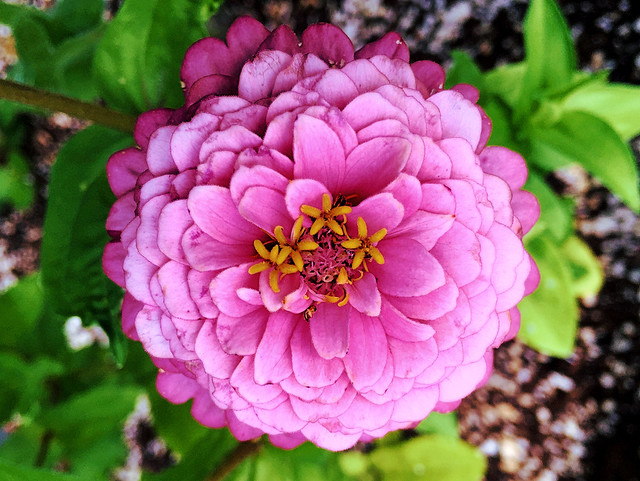|

Brian Wilcox 'Zinnia - Demariscotta, Maine'
Kabir Edmund Helminski -
At one point in my journey, my teacher's teacher, an eighty-year-old man, had been in a serious car accident, which had brought him close to death. For months the master's condition was uncertain, causing all those who loved him to become acutely aware of what his living, flesh-and-blood friendship meant to them. Eventually he would recover and live many more years. But when he was well enough to barely walk, he phoned my teacher to tell him that he would have a special lesson if my teacher could come to his apartment on a certain night. Since this was the first opportunity for the two of them to be together in months, my teacher was full of expectation.
They took a walk that evening, so slow and deliberate that it emphasized the attention required of the master for each painful step. They walked as far as one of the most elegant drinking establishments of that great world capital. My teacher's teacher opened the door of the tavern and they stepped just inside. It was as if they were perfectly invisible, while the patrons, the most fashionable men and women, continued in their loud, intoxicated conversations. "See?" he simply said.
*Living Presence. Rev. Ed.
Helminski askes, "Are we consumed by the experiences of life?" He observes, "Sometimes we want to begin spiritual work but are too full." And, "We can either be empty with Spirit or full of ourselves."
* * *
The emptiness is a full void. This void is not like the cramped space of a voracious ego, which consumes all about it, including what it calls "good," to sustain the illusion of its illusory self-existence, rather than that its existence is Existence itself.
* * *
The void is spacious and receptive, for its spaciousness allows receptivity. Hence, it allows the inflow of grace, or higher-order energies. As Simone Weil writes, in Love in the Void -
Grace fills empty spaces, but it can only enter where there is a void to receive it, and it is grace itself which makes this void.
Consequently, since the void is by grace to grace, the more grace, then, the more grace.
* * *
Practices of silence are means to welcome the fertile spaciousness, which is the opening up of consciousness beyond the constriction of the self-sense and its identification with the body. When one in silence senses the self resisting the void, wanting to escape the discomfort and feed on its usual stimulation, that is the moment to relax into the discontent. Now, in relaxing, one will notice, in time, the escape-tension dissolves into the Silence, its original Home.
To walk the Way, we choose to make more space for quiet outside our times in meditation. This simplicity corresponds with the simplicity of the Quiet. If we are not willing to simplify outside the Quiet, we will find our time in intentional Quiet and the rest of our life out of sync. We want harmony both within and without, so our whole life becomes an expression of the Silence, even amid talk, music, traffic, conversation, work, ... You yourself become an environment of the Silence.
* * *
Philippians 4.7 -
[Christ Jesus] emptied himself,
taking the humble form of slave....
* * *
As Helminski says, we can be too full. Full of what - full of attachment to conversation, social media, television, cruising the web, ... - simply put, full of noise. For one to live with the inner quiet, the fecund spaciousness, one makes choices to cultivate this by what and how much she engages in daily life. Through this, she can feel the inner settling, as outer stimulation is reduced, providing calm to the body. In time, she feels less contrast between the times in the Quiet and the Silence that pervades her entire life.
With the increase of this grace of Quiet, she is seduced more into it. She feels its charm, enjoying its gift to her, and through her, to those with whom she mixes. She sees, "By being empty, I am full," and, "By having nothing to give, others receive through the emptiness I have become and am."
* * *
(C) Brian K. Wilcox, 2020
|





